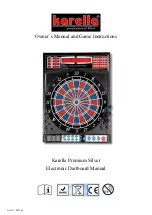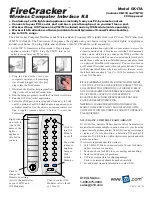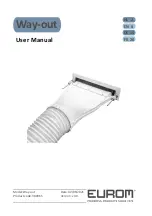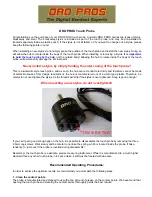
Rain Bird
Flow Sensors
Manual
3
Mechanical Installation
General
The accuracy of flow measurement for all flow measuring devices is highly dependent on proper location of the
sensor in the piping system. Irregular flow velocity profiles caused by valves, fittings, pipe bends, etc. can lead
to inaccurate overall flow rate indications even though local flow velocity measurement may be accurate. A
sensor located in the pipe where it can be affected by air bubbles, floating debris, or sediment may not achieve
full accuracy and could be damaged. Rain Bird flow sensors are designed to operate reliably under adverse
conditions, but the following recommendations should be followed to ensure maximum system accuracy:
1) Choose a location along the pipe where 10 pipe diameters upstream and 5 pipe diameters downstream of the
sensor provide no flow disturbance. Pipe bends, valves, other fittings, pipe enlargements and reductions
should not be present in this length of pipe.
2) The preferred location around the circumference of a horizontal pipe is on top. If trapped air or debris will
interfere, then the sensor should be located further around the pipe from the top but not more than 45
degrees from top dead center. The sensor should never be located at the bottom of the pipe, as sediment
may collect there. Locations off top dead center cause the impeller friction to increase, which may affect
performance at low flow rates. Any circumferential location is correct for installation in vertical pipes.
3) Small pipe PVC and Bronze Tee Type sensors are Factory Set, but for insert sensors the Insertion depth
should be set to 1 1/2" for accurate flow readings. The following pages show methods for ensuring correct
insertion depth for various sensor mounting configurations.
4) Alignment of the sensor to ensure that impeller rotation is parallel to flow is important. Alignment instructions
are also included on the following pages.
Mechanical Installation for PVC Tee Sensors
1) Note intended direction of flow as indicated by arrows on the tee. There must be free, unrestricted pipe for at
least 10 diameters upstream and 5 diameters downstream of the tee.
2) Remove the clevis pin and remove the sensor from the tee.
3) Properly clean the pipe ends and tee sockets.
4) Solvent cement the pipe to the tee.
5) Reinstall sensor in tee as follows:
a) Align the flow arrow on the top of the sensor housing in the direction of flow.
b) Carefully press sensor straight into tee.
c) Lead the sensor cable through the conduit cap, if so equipped. The cap will fit standard
1/2” conduit
fittings.
d) Install clevis pin through tee, sensor, and conduit cap, and install cotter ring.
Mechanical Installation for Bronze Tee Sensor
Install with flow label pointing in the direction of flow (downstream).
To install the sensor tee
1) Note intended direction of flow as indicated by arrows on the cast bronze tee. There must be free,
unrestricted pipe for at least 10 diameters upstream and 5 diameters downstream of the tee.
2) Apply pipe compound over the first 3 or 4 threads of the mating pipe.
3) Thread the pipe into the sensor tee until hand tight.
4) Tighten the pipe, using a wrench, an additional 1 1/2 turns.





























